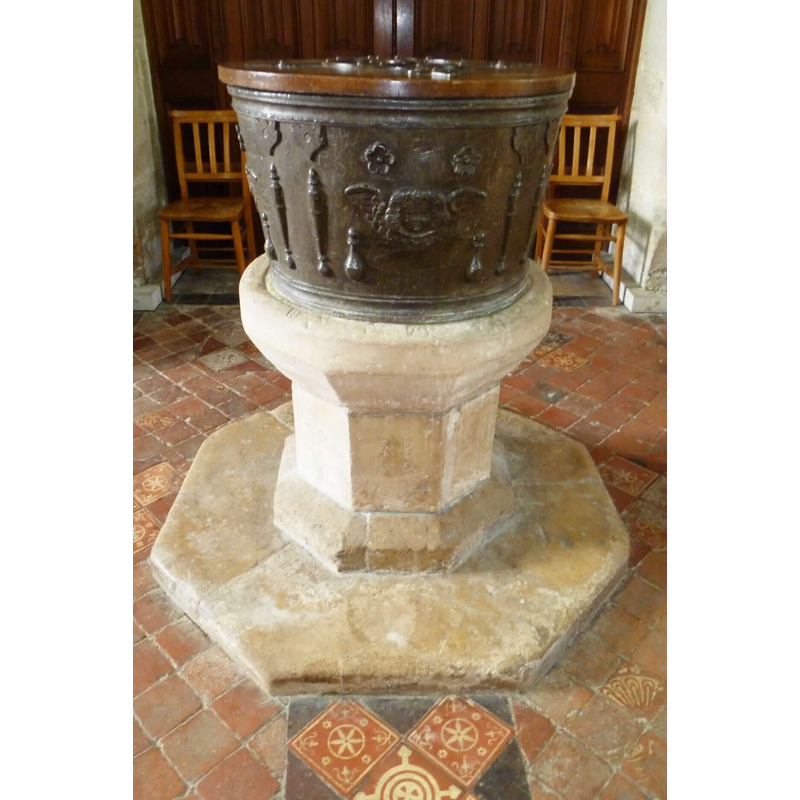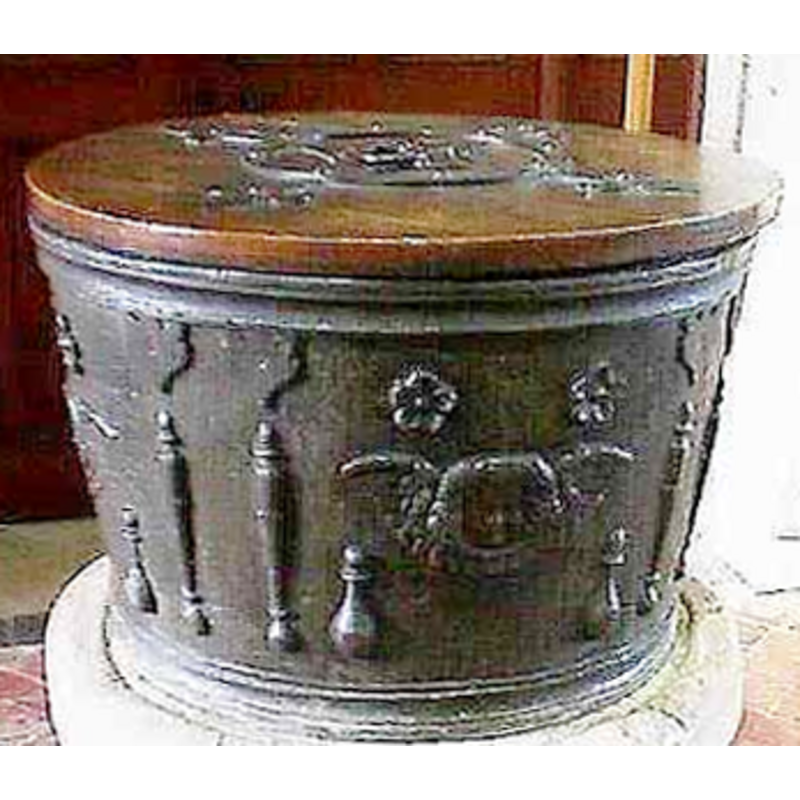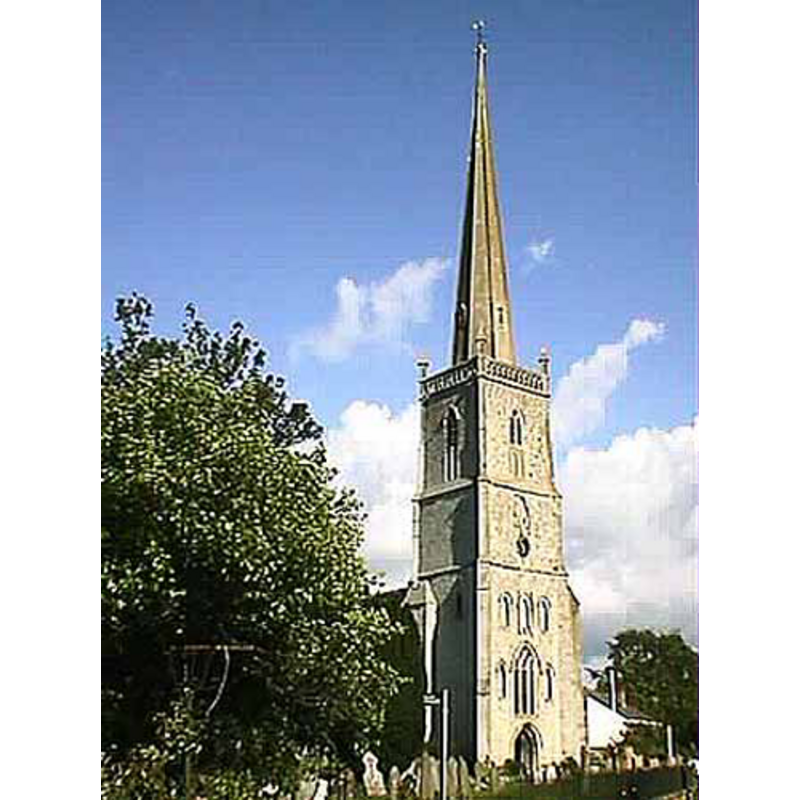Slimbridge / Clunbridge

Image copyright © John Wilkes, 2011
Standing permission
Results: 7 records
B01: design element - motifs - floral
B02: symbol
B03: angel - cherub - head
R01: design element - motifs - moulding - parallel
view of church exterior - west end
view of church interior - nave - looking east
INFORMATION
FontID: 05568SLI
Object Type: Baptismal Font1
Church/Chapel: Parish Church of St. John the Evangelist
Church Patron Saints: St. John the Evangelist
Church Location: St. John's Road, Slimbridge, Gloucestershire, GL2 7BJ
Country Name: England
Location: Gloucestershire, South West
Directions to Site: Located about 15 km W of Stroud, on the eastern shores of the Severn
Ecclesiastic Region: Diocese of Gloucester
Font Location in Church: Inside the church
Date: 1664? / 1634?
Century and Period: 17th century(mid?), Restoration / Stuart
Workshop/Group/Artisan: lead font
Credit and Acknowledgements: We are grateful to John Wilkes, of The Gloucestershire Photo Library [www.allthecotswolds.com], for his identification of 'CLUNBRIDGE' as Slimbridge, and for the photographs of this church and font
Font Notes:
Click to view
Noted as a lead font in Batty (1848). Andre (1882) notes a post-Reformation lead font, dated ca. 1630-1640, in Clunbridge, Gloucs. So does Crossley (1941): "the last [lead font] made in the seventeenth century is at Clunbridge in Gloucestershire". Noted as 1th-century in Lethaby (1893). Both Andre and Crossley must have referred to the font at SLIMBRIDGE, which is listed in Cox & Harvey (1907) as a lead baptismal font dated to 1664, and described in Bond (1908) as a baptismal font made of lead, ornamented with non-figural motifs and dated to 1664. In Fryer (1908), who notes the sets of initials inscribed in the basin ("I.T." / "W.S."), as well as those on the base: ("R.B." / "A.P.") Noted in Verey & Brooks (1999-2002): "Font. Circular lead bowl dated 1664; sparsely decorated with winged cherubs, roses, and kinds of balusters a little like exclamation marks. The stone base is dated 1634."
COORDINATES
Church Latitude & Longitude Decimal: 51.730418, -2.377283
Church Latitude & Longitude DMS: 51° 43′ 49.51″ N, 2° 22′ 38.22″ W
UTM: 30U 543006 5731239
MEDIUM AND MEASUREMENTS
Material: metal, lead
Font Shape: cylindrical
Basin Interior Shape: round
Basin Exterior Shape: round
Diameter (inside rim): 67.5 cm*
Basin Total Height: 40 cm*
Notes on Measurements: * [in inches in Fryer (1908: 281)]
INSCRIPTION
Inscription Language: Initials and numbers
Inscription Notes: [cf. FontNotes]
Inscription Location: 1)on the basin and 2)on the base
Inscription Text: 1) "1664 / I.T. / W.S."
2) "1634 / R.B. / A.P."
Inscription Source: [cf. FontNotes]
LID INFORMATION
Date: unknown
Material: wood
Apparatus: no
Notes: flat and round, with metal decoration and handle
REFERENCES
André, J. Lewis, "Leaden Fonts in Sussex", 32, Surrey Archaeological Collections, relating to the history and antiquities of the county, 1882
Batty, Robert Eaton, Some particulars connected with the history of baptismal fonts: being a paper read at the quarterly general meeting of the Architectural and Archaeological Society for the County of Buckingham, London: F. & J. Rivington, 1848
Bond, Francis, Fonts and Font Covers, London: Waterstone, 1985 c1908
Cox, John Charles, English Church Furniture, New York: E.P. Dutton & Co., 1907
Crossley, Frederick Herbert, English Church Craftsmanship: an Introduction to the Work of the Mediaval Period and Some Account of Later Developments, London: B.T. Batsford, 1941
Fryer, Alfred C., "The Gloucestershire fonts", 31(1908); 34(1911); 40(1917); 41(1918); 42(1920), Transactions of the Bristol and Gloucestershire Archaeological Society, 1908, 1911, 1920, pp. 31 (277-281); 34 (195-207); 40(39-56); 41 (27-35); 42 (69-88); p. 280, 281
Lethaby, William Richard, Leadwork, old and ornamental, and for the most part English [...] with illustrations, London; New York: Macmillan & co., 1893

![[cf. Font notes]](/static-50478a99ec6f36a15d6234548c59f63da52304e5/compressed/1070109001_compressed.png)

